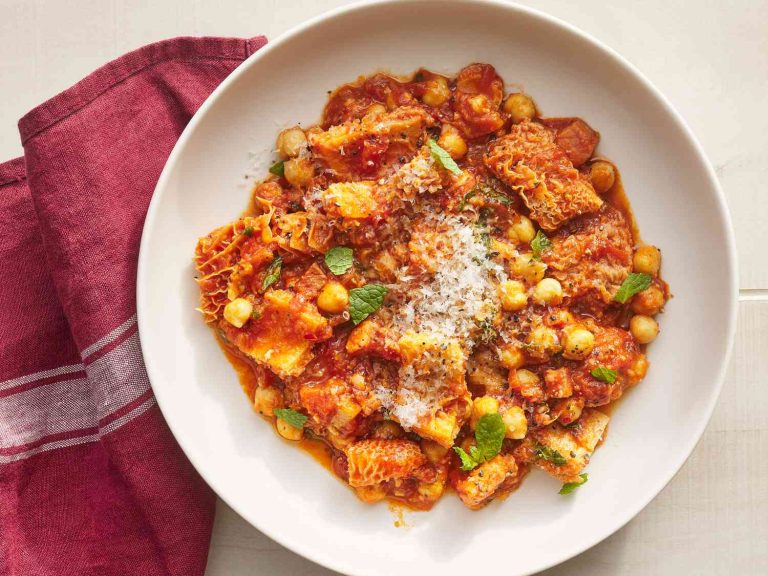Bean Soup: History, Health Benefits, and Delicious Recipes
Bean soup dates back thousands of years, originating in various ancient civilizations. Egyptians cooked lentil soup, while Greeks consumed fava bean stews. In these early societies, beans were staple crops, offering vital nutrients. They thrived in diverse climates, making them essential for daily sustenance.
Various cultures treat bean soup as a symbol of comfort and tradition. Native Americans prepared bean and squash soups, incorporating indigenous ingredients. In Italy, pasta e fagioli became a beloved household dish, showcasing regional beans. Each variant connects deeply to its cultural roots, telling a local story through its ingredients and preparation methods.
Popular Variations Across the World
Countries around the globe have developed unique versions of bean soup, each reflecting local tastes and ingredients:
- Italy: Minestrone, rich with cannellini beans, vegetables, and pasta.
- France: Cassoulet, a slow-cooked casserole featuring white beans and meats.
- Mexico: Frijoles de la olla, traditional pinto beans served with chilies and spices.
- Spain: Fabada Asturiana, using fava beans, chorizo, and morcilla.
- Middle East: Harira, a Moroccan soup brimming with lentils, chickpeas, and tomatoes.
- Greece: Fasolada, a classic white bean soup combined with olive oil, tomatoes, and vegetables.
- Brazil: Feijoada, a black bean stew, with pork and beef, often served over rice.
These variations illustrate bean soup’s adaptability and global appeal, providing nutritious and flavorful dishes enjoyed by many cultures.
Key Ingredients in Bean Soup
Types of Beans to Use
Beans form the foundation of bean soup. Common choices include:
- Navy Beans: Small and oval-shaped, they cook quickly and absorb flavors well.
- Black Beans: Dense and meaty, they add depth to the soup.
- Kidney Beans: Large and firm, they hold their shape during cooking.
- Pinto Beans: Medium-sized with a creamy texture, they blend well with spices and herbs.
- Cannellini Beans: White and mild-flavored, they create a smooth, creamy consistency.
Combining different types of beans can add texture and flavor complexity to your soup.
Essential Herbs and Spices
Herbs and spices elevate the taste profile of bean soup. Common selections include:
- Bay Leaves: Add a subtle, herbal flavor. Remove them before serving.
- Thyme: Earthy and robust, it complements the beans’ natural flavor.
- Garlic: Adds depth and a savory aspect. Minced or crushed works best.
- Cumin: Warm and slightly smoky, it pairs well with both black and pinto beans.
- Paprika: Sweet or smoked, it enhances the soup’s richness.
Fresh herbs like parsley or cilantro can be added before serving for additional freshness.
Health Benefits of Bean Soup
Nutritional Value
Bean soup offers a wealth of nutritional benefits. It’s high in protein, making it a valuable source of this macronutrient for vegetarians and meat-eaters alike. Beans also contain essential vitamins and minerals such as iron, magnesium, potassium, and folate, supporting overall health. A cup of cooked beans can provide around 15 grams of protein and 15 grams of fiber, aiding in muscle building and digestive health. Additionally, the soluble fiber in beans can help lower cholesterol levels, reducing the risk of heart disease. By incorporating a variety of beans into your soup, you ensure a diverse intake of nutrients, contributing to a well-balanced diet.
Diet-Friendly Qualities
Bean soup caters to various dietary preferences and restrictions. It’s naturally gluten-free and can be adjusted to meet vegan or vegetarian standards by using vegetable broth and omitting animal-based ingredients. Low in fat yet rich in fiber, bean soup helps maintain a healthy weight by promoting satiety. Furthermore, it can be made low in sodium by selecting no-salt-added beans and broths, making it suitable for those monitoring their sodium intake. The soup’s high protein content makes it a great meal choice for those following a high-protein diet. Simple modifications allow bean soup to accommodate keto or low-carb requirements, offering flexibility for diverse dietary needs.
Cooking Techniques
Soaking and Cooking Beans
Soaking beans is crucial for optimal texture and reduced cooking time. Use either the traditional or quick-soak method. For the traditional method, cover beans with water and let them sit for 8-12 hours. For quick-soak, boil beans for 2 minutes, remove from heat, and let them stand for 1 hour. Drain and rinse before cooking.
When cooking beans, use a large pot, and add fresh water in a 3:1 water-to-beans ratio. Bring to a boil, then simmer. Cooking time varies: black beans cook in 60-90 minutes, kidney beans in 90-120 minutes. Avoid adding salt or acidic ingredients like tomatoes until beans are tender, as they can harden beans.
Tips for Flavor Enhancement
Enhance flavor by adding aromatics. Use onions, garlic, and bay leaves during cooking. Integrate spices like cumin, coriander, and thyme for depth. For heat, add chili peppers or a dash of cayenne.
Incorporate umami-rich ingredients. Use broth instead of water or add a piece of kombu seaweed. Mix in soy sauce, miso, or tomato paste for richness. Finish with fresh herbs like parsley or cilantro and a squeeze of citrus juice. Add a splash of high-quality olive oil or a few drops of truffle oil for a luxurious finish.
Favorite Bean Soup Recipes
Classic Bean Soup
Classic bean soup has a timeless appeal, often passing down through generations. The staple ingredients typically include white beans, carrots, celery, onions, garlic, and ham or bacon. Here’s a simple recipe:
- Ingredients:
- 1 cup dried white beans (soaked overnight)
- 1 cup diced carrots
- 1 cup chopped celery
- 1 large onion, chopped
- 3 cloves garlic, minced
- 1 cup diced ham or bacon
- 6 cups chicken broth
- 1 bay leaf
- Salt and pepper to taste
- Instructions:
- In a large pot, sauté onions, garlic, and ham or bacon until onions are translucent.
- Add in carrots, celery, and soaked beans. Stir for 5 minutes.
- Pour in the chicken broth and add the bay leaf. Bring to a boil.
- Reduce heat and let it simmer for 1-2 hours or until beans are tender.
- Season with salt and pepper. Remove the bay leaf before serving.
This basic yet flavorful recipe offers a hearty meal that is perfect for cold days.
Innovative Twists on Traditional Recipes
Modern bean soup recipes often innovate on classic methods to add new flavors and textures. Here are some variations:
- Spicy Black Bean Soup:
- Include 1 can of black beans, 1 cup diced tomatoes, 1 diced red bell pepper, 1 minced jalapeño, and 1 teaspoon cumin. Use vegetable broth to keep it vegan.
- Tuscan White Bean Soup:
- Add 2 cups of kale, 1 can of cannellini beans, 2 diced tomatoes, 1 finely chopped rosemary sprig, and 1/4 cup olive oil. This recipe brings a Mediterranean twist to the classic.
- Curried Lentil and Bean Soup:
- Incorporate 1 cup red lentils, 1 cup chickpeas, 1 diced onion, 2 cloves minced garlic, 1 tablespoon curry powder, and 4 cups vegetable broth. Garnish with fresh cilantro for a vibrant finish.
Each recipe offers a unique twist, allowing you to explore different cuisines while maintaining the nutritious benefits of bean soup.
Conclusion
Bean soup is more than just a comfort food; it’s a versatile and nutritious dish that fits into any diet. Whether you prefer the classic flavors of white beans and ham or enjoy experimenting with spicy or exotic variations, there’s a bean soup recipe for everyone. By incorporating different beans, spices, and ingredients, you can create a meal that’s both delicious and beneficial for your health. So, grab your favorite ingredients and start exploring the endless possibilities of bean soup today.






